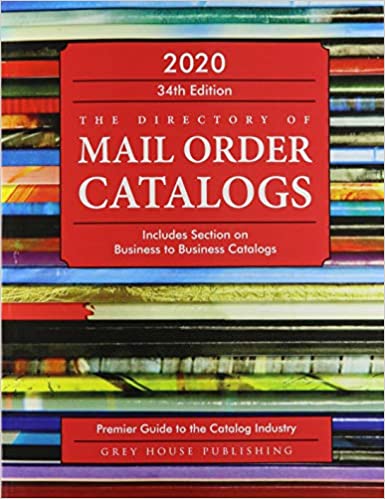In a large-scale field study conducted by Harvard Business Review, a luxury e-commerce retailer found that by adding print catalogs, it increased sales by 28% and inquiries by 77%. It also yielded a direct ROI of 600%.
Did you see the eMarketer article on the comeback of print catalogs? Maybe if it weren’t a digital publication, it wouldn’t have stuck out to me so much. But to hear eMarketer praise the value of print catalogs was kind of fun. Then there was the fact that I received a direct mail piece from Google the same day. That was fun, too.
These experiences got me thinking about the current data set on the power of catalogs, especially among companies that are 100% online. (Check out this interesting list from Modern Fellows of 46 online retailers, including Amazon, that are now marketing using print catalogs.) Most of the data—and it’s good data, don’t get me wrong—that I find is older. What has there been recently that is new? That sent me searching for more current research, especially that showed not just that catalogs work, but by how much.
That’s why I got excited when I found this study reported by Harvard Business Review. It was a large-scale field experiment conducted in 2020 with a luxury jewelry e-commerce retailer with no physical store. The company has $60 million in annual revenue, with an operating profit of $12 million and a database of approximately 28,000 customers. (It acquires customers primarily through online search and other online platforms.) The study was designed to discover, not just whether people read catalogs, because we have tons of data that they do, but how much a catalog directly impacts sales.
Here’s how the experiment worked: On HBR’s recommendation, the retailer launched a new, bi-monthly catalog featuring “professional and artistically rendered product photography with high-quality printing.” The company then randomly selected 30% of its U.S.-based customers for the experiment. Of those…
- 5% received neither email nor catalogs for six months (the control group),
- 55% received a weekly marketing email, and
- 40% received the new bi-monthly catalogs in addition to the weekly email marketing.
To control for the effects of content, more than 90% of the products were the same between the emails and the print catalogs. The same sets of photos and descriptions were also used in both. The research team then tracked purchases and product inquiries across all three groups.
The results?
- The retailer saw a 15% lift in sales and a 27% lift in inquiries from the email + catalog group compared to the “email only” group.
- It saw a 28% increase in sales and 77% lift in inquiries from the “email only” group over the control group, but a 49% lift in sales and 125% lift in inquiries from the email + catalog group over the control.
- Based on follow-up surveys, HBR ascertained that more than 90% of the customers had browsed through the catalogs and kept those catalogs for an average of seven days. It also found that, when the print catalog was added to the mix, order sizes increased by 15%.
According to the report:..


